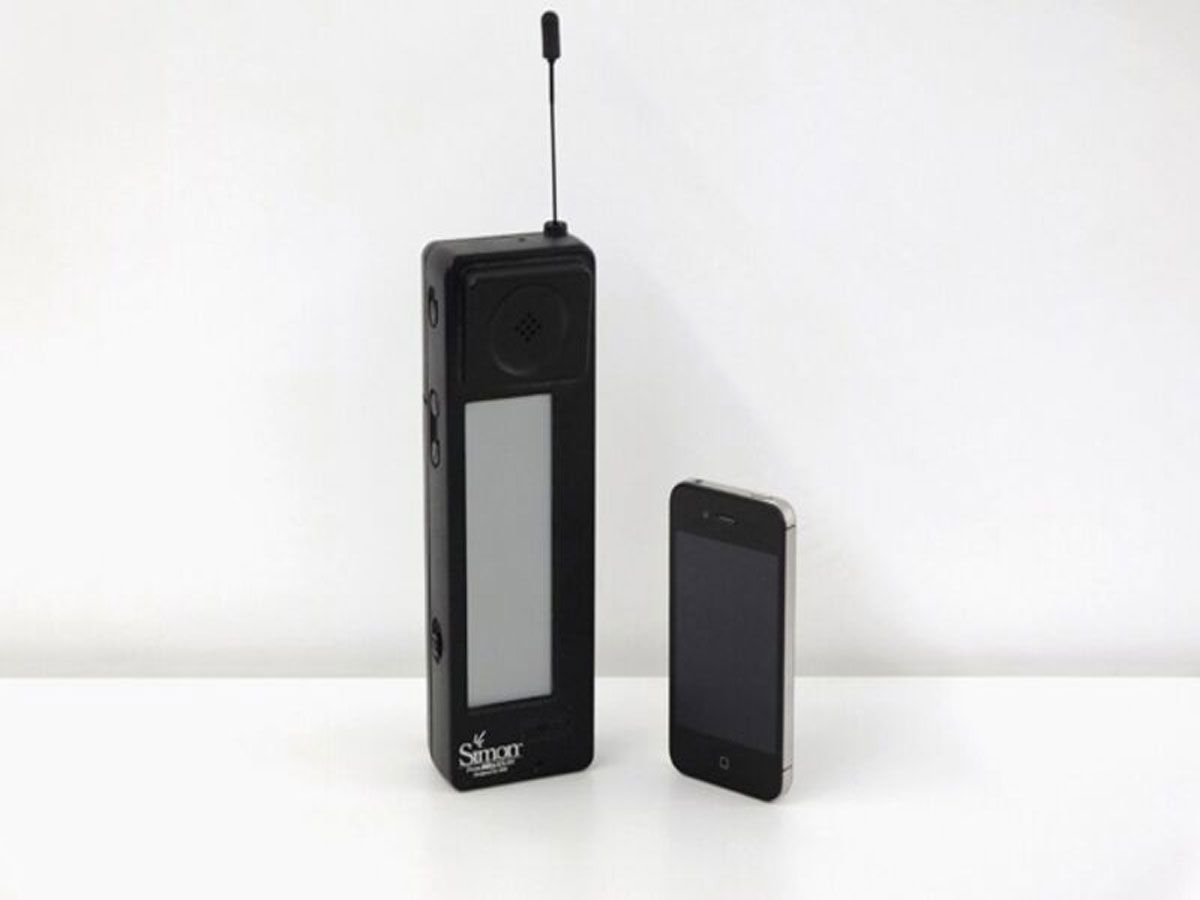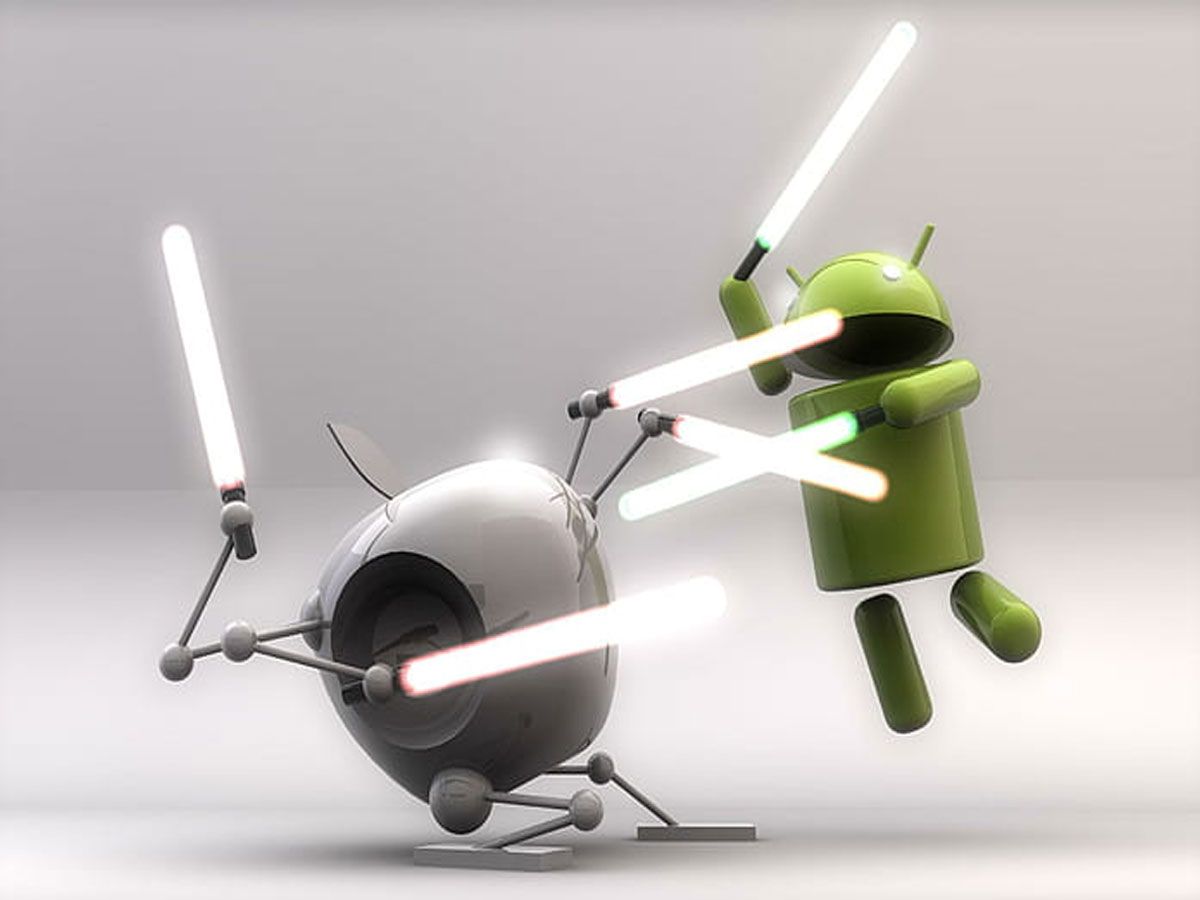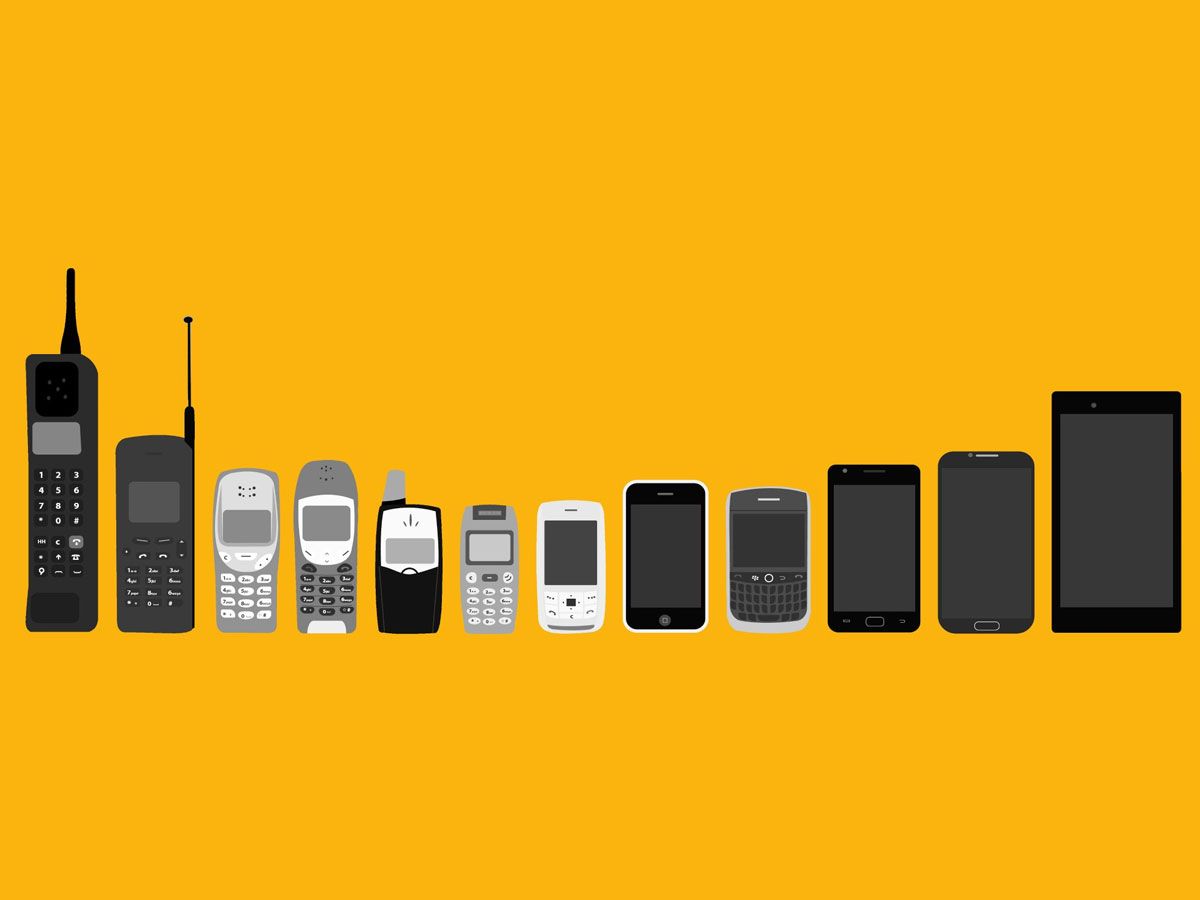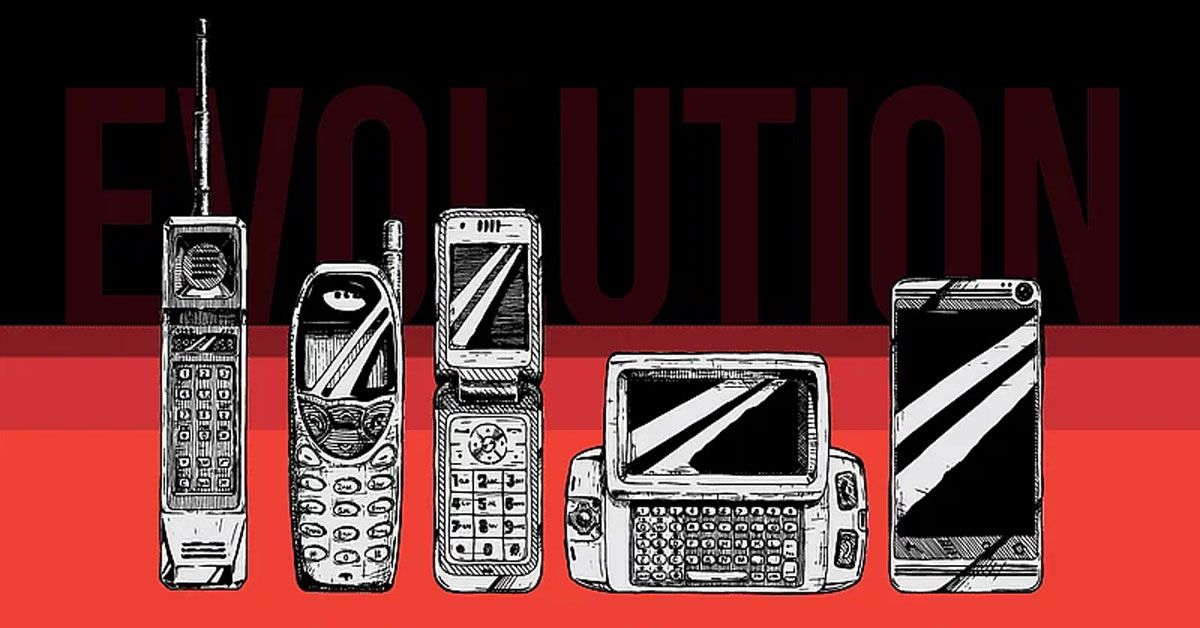Are you reading this on your Smartphone right now? If so, you're not alone. Smartphones have become an essential component of our everyday routine, revolutionizing our methods of communication, productivity, and leisure activities. But have you ever wondered about the origins of these pocket-sized devices that have become ubiquitous in our modern world?
Do you know Who is the Father of Telephone?
The commonly credited inventor of the telephone is Alexander Graham Bell, but the complete story reveals the existence of a "Forgotten Pioneer of the Telephone."
A Brief History of the Smartphone

The history of smartphones dates back to the 1990s when the first handheld mobile phones were introduced. These early mobile phones were primarily designed for voice calls and text messaging. However, as technology advanced, so did the capabilities of these devices. As a result, the Smartphone was introduced in the early 2000s to serve a purpose beyond traditional phone calls and texts. It was meant to be a mini-computer capable of running applications, browsing the internet, and providing access to various digital services.
One of the earliest smartphones to hit the market was the IBM Simon, which was released in 1993. The IBM Simon was more of a personal digital assistant (PDA) than a smartphone, but it was a groundbreaking device nonetheless. It featured a touchscreen display, handwriting recognition, and the ability to send and receive faxes and emails.
In the late 1990s and early 2000s, many companies ventured into the realm of smartphones. Ericsson's GS88, released in 1997, was among the first mobile phones to offer internet connectivity. Similarly, Nokia's 9000 Communicator, launched in 1996, was one of the earliest smartphones to incorporate a full QWERTY keyboard and the capability to send and receive emails.

The rise of Symbian OS in the early 2000s was a major milestone in the development of smartphones. Symbian OS was an open-source operating system that was used by several major phone manufacturers, including Nokia, Sony Ericsson, and Motorola. It provided a platform for the development of mobile applications, paving the way for the app stores we know today.
Palm OS, BlackBerry OS, and Windows CE were also popular operating systems for early smartphones. Palm OS was developed by Palm Inc. and was used on several popular devices, such as the Palm Treo and Palm Centro. BlackBerry OS was developed by Research In Motion (now known as BlackBerry Limited) and was used on popular devices such as the BlackBerry Pearl and BlackBerry Bold. Windows CE was developed by Microsoft and was used on devices such as the HP iPAQ and the Dell Axim.
Apple's Game-Changing iPhone

In 2007, Apple's introduction of the iPhone revolutionized the smartphone industry. Although not the first touchscreen phone or Smartphone, it was the first device to combine all the essential elements of a successful smartphone in a single package. The iPhone was not just a phone but a multimedia device that could play music and video, browse the internet, and even take pictures.
The impact of the iPhone on the smartphone market was immense. It ushered in a new era of smartphone design, with many competitors scrambling to keep up with the new standard set by Apple. The iPhone's intuitive user interface, beautiful design, and seamless integration with other Apple products quickly made it a favorite among consumers.
Another game-changer introduced with the iPhone was the App Store. The creation and sale of apps to millions of iPhone users worldwide was made possible through the App Store, resulting in a significant change in smartphone usage. Suddenly, an endless array of apps was available for everything from social networking to gaming to productivity, and the App Store quickly became a key selling point for the iPhone. Today, the App Store boasts over 2 million apps, generating billions of dollars in revenue for Apple and app developers.
Android and Qualcomm's Contributions
With the expansion of the smartphone industry, Android became a significant competitor in the market. Launched in 2008, Android is an open-source operating system that quickly gained popularity among manufacturers due to its flexibility and customizable nature. Android enabled manufacturers to create smartphones with a variety of hardware configurations and software customizations, leading to a diverse range of devices that catered to different price points and target markets.
Qualcomm, a major semiconductor company, played a significant role in shaping the Android ecosystem with its Snapdragon system-on-a-chip (SoC). The Snapdragon SoC is an integrated circuit that combines multiple components, including the central processing unit (CPU), graphics processing unit (GPU), and wireless connectivity modules. Qualcomm's Snapdragon SoCs are widely used in Android smartphones and have been instrumental in delivering better performance and improved battery life.
In addition to the Snapdragon SoC, Qualcomm has also introduced several other innovations that have driven the evolution of smartphones. One such innovation is Quick Charge, a fast-charging technology that reduces charging times and improves the overall user experience. Another significant contribution by Qualcomm is its work on 5G technology, which has enabled faster data transfer speeds and lower latency in smartphones.

The Battle of Ecosystems
In the smartphone market, two ecosystems have emerged as clear leaders - Apple's iOS and Google's Android. These two companies have been the driving force behind the development of smartphones, and they have created a duopoly in the market. Apple's iOS and Google's Android are fundamentally different in their approaches. While Apple has a closed ecosystem with tight control over hardware and software, Google's Android is open-source, allowing device manufacturers to customize the platform to their liking.
The dominance of Apple and Google in the smartphone market has left little room for other platforms to gain traction. Numerous companies attempted to develop their own mobile operating systems, but only a handful achieved success. Microsoft's Windows Phone, launched in 2010, did not gain a significant market share and was discontinued in 2017. Similarly, BlackBerry OS, which used to be a leading player in the market, lost its popularity due to its inability to keep up with the fast pace of innovation in the industry.

Newcomers in the smartphone industry need help in developing an ecosystem of apps and services that can measure up to those of established players. In order to reach a large audience, developers must ensure that their mobile applications are available on the primary distribution channels of the App Store and Google Play Store. This has made it difficult for new entrants to compete, as they have to convince developers to create apps for their platform and build a user base from scratch.
The Evolution of Smartphone Form Factor
Smartphones have undergone significant changes in their form factor since their inception. In the early days, smartphones were typically small and compact, with physical keyboards and small screens. As technology progressed, the devices became larger. The introduction of phablets, which are phones with a screen size larger than 5.5 inches, changed the way people interacted with their devices. It allowed for more screen real estate and made multimedia consumption, such as watching videos, more immersive.

The rise of the Samsung Galaxy Note was a turning point in the phablet market. The device, with its 5.3-inch screen, was initially met with skepticism. However, it quickly became a massive hit, and other manufacturers followed suit. Nowadays, the Galaxy Note is widely regarded as the pioneer of the phablet category.
Another trend that emerged was the concept of smartphones as digital hubs. As the devices became more powerful, they began to take over the role of several other devices. They replaced cameras, music players, and even computers for many users. This change in functionality brought about a shift in the design of the devices. Screens became larger, bezels got smaller, and devices began to resemble mini-tablets rather than traditional phones.

Recently, a new form factor has been introduced: foldable handsets. The technology allows the screen of the device to fold, which means it can expand to a larger size while remaining pocketable. While this technology is still in its infancy, it shows promise as the next big leap in smartphone design. The form factor could allow for a new level of multitasking, with users able to have multiple apps open at once, and it could also lead to new use cases, such as digital art and gaming.
The Future of Smartphones
The smartphone industry is constantly evolving, and the future of smartphones is expected to be nothing short of exciting. 5G networks have been one of the biggest advancements in recent years. This next-generation wireless technology is set to bring about a significant increase in speed, capacity, and latency, enabling the faster transfer of larger data files and seamless connectivity across devices.
The advancement of VR and AR technology is expected to impact the future of smartphones significantly. With the increasing popularity of VR headsets and AR applications, there is a growing need for smartphones that can provide exceptional immersive experiences.
Flexible display technology is another area that is expected to shape the future of smartphones. As more manufacturers invest in this technology, we can expect to see more foldable and rollable smartphones hitting the market in the coming years. These devices will offer a new level of flexibility and portability, allowing users to carry larger screens in smaller form factors.
One of the most exciting developments in the world of foldable smartphones is the concept of the "rollable." This innovative design allows the screen to roll up into a compact form factor when not in use, making it easier to carry and store. Although the technology is not yet mature, various manufacturers are currently striving to produce this innovative form factor.
The evolution of smartphones has been nothing short of remarkable. From the early days of clunky devices with limited capabilities to the sleek, powerful pocket computers we have today, smartphones have changed the way we communicate, work, and entertain ourselves. The competition between Apple and Google, along with the contributions of Qualcomm, have shaped the industry and driven innovation.
The rise of phablets, the Samsung Galaxy Note, and foldable handsets have redefined the form factor, making smartphones even more versatile. Looking forward, the potential of 5G networks, VR and AR, flexible displays, and new form factors like rollable's make the future of smartphones even more exciting. The future holds exciting possibilities for smartphones as they become increasingly essential in our daily lives. With each passing day, we can only imagine the incredible advancements they will offer.
Source: techradar.com / britannica.com / bloomberg.com / bbc.com / sciencemuseum.org.uk / thenextweb.com













